Fieldwork
Photos
While the enumerators were administering the survey, I walked around the compound to take some photos. This is what a typical survey compound looked like--mud huts, straw roofs, and probably a baobab in front.
This photo is in front of the UERD office in Ouagadougou.
That's the bush taxi I rented to transport the fieldworkers to the survey site.
On top are their mopeds that they will use for getting out to the compounds for
the interviews. That's me in front carrying out a box of supplies.
Fulani (or Pheul) herders moving cattle through the survey villages.

A watering hole for animals. In this region, once the rains stop in September, it doesn't rain again until May. These photos were taken in early May, about 2 weeks before the rains came.

Fatimata is administering the survey to one of the tracked households. I left her for a few hours to interview the different members of the household (husband and all his wives), while I went back to get another fieldworker and bring them out to another tracked household.

Arriving at a tracked household and explaining to the head
of the household and the other members why we were there. Fati is in the front
on the right, I am sitting behind her, and the household head is to my right.
Typical Sahelian market in the village of Nagnesna. Lots of nere trees in the distance. On market day, the place would be crowded with folks selling everything imaginable.

Back in Ouagadougou, this is the bar, L'Acadamie, across the street from UERD. Afternoon coffee breaks were often spent here, so I guess that makes it the local Burkinabe Starbucks.

That's me and the infamous "4 X 4 double cabine Hilux" in front of my house. Without a doubt, the coolest car I've ever owned.

That's me in front of the UERD offices. The project team is getting ready to head back out to the field for the tracking phase of the survey.

The final product of all this hard work. Lots and lots of surveys. Those boxes on top of the bookshelf and on the side are just the Phase 1 surveys. In total, almost 2400 individuals were interviewed and I shipped back to the U.S. about 600 pounds of paper.

View from in front of our project team's house in Toece. The
village chief let us use the house for the several months we were in the region
doing the surveys. The compounds in the photo are typical of the area, where
each compound is surrounded by its own fields.
Looking the other direction from the house. More compounds and lots of dry land.

A few of the fieldworkers in front of the house were we
lived in Toece. From left to right: Touende (supervisor), Oussimane
(enumerator), Jean-Baptiste (field manager), Liza (enumerator), and I am in
front.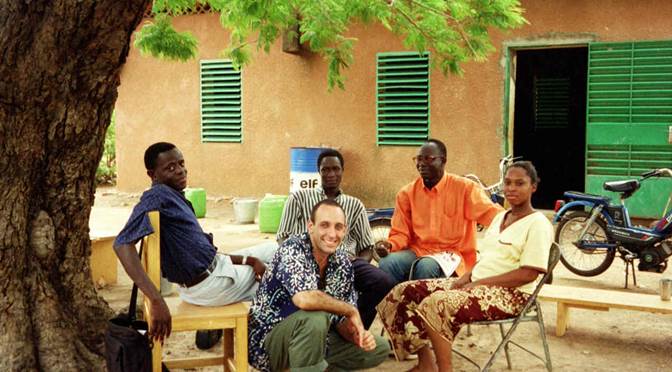
Touende and I dropped off Oussimane in the compound behind
us, and while he was interviewing the household members, we got out the
portable table and chairs and got to work on correcting other surveys. Never a
minute to waste.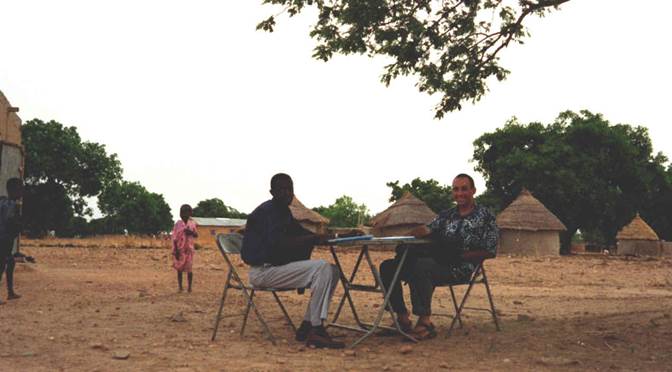
There's the truck again. Moussa is the other project manager and he's sitting in the back seat. We are heading off to find more tracked households.
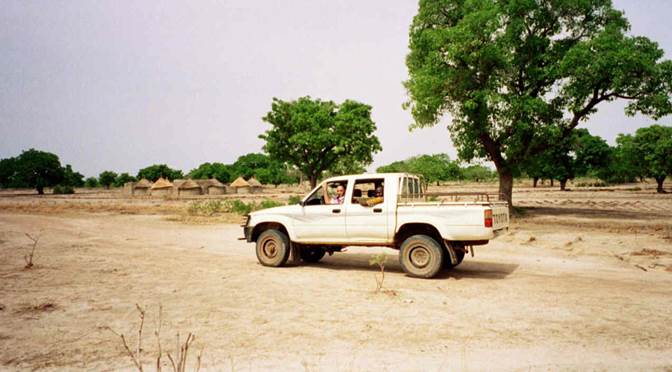
Several photos from the visit to UERD by the U.S. Ambassador to Burkina Faso, Jimmy Kolker. He came to find out more about the research they are doing and to thank them for taking such good care of me.
This is a group photo of the folks who work at UERD, including the director, researchers, secretary, driver, and visiting foreign researchers. Kneeling in front: Banza Baya. First row (from left to right): Madeline Wayack, Abdoulaye Ouedraogo, Abdramane Soura, Yameogo Perpetue, Stephanie Baux, Georges Guiella. Second row (from left to right): Gabriel Sangli, Mamadou Niang, Michel Kabore, Marc Pilon, Gabriel Pictet, Richard Akresh. Third row (from left to right): Badoum, Georges Compaore, Hubert Barka Traore.
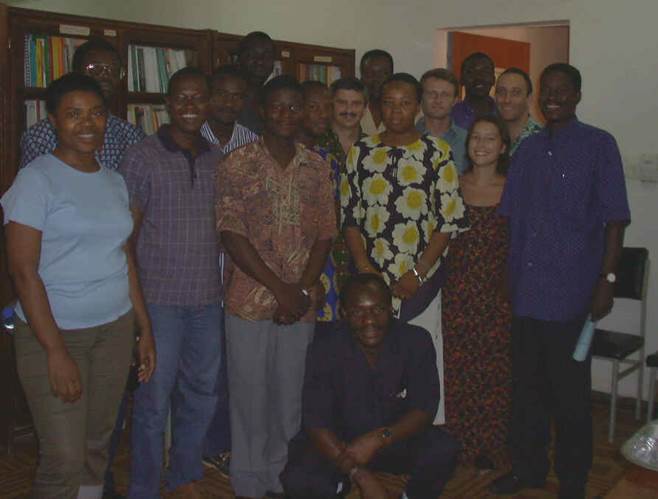
U.S. Ambassador (in the white shirt) giving a speech to the UERD researchers.
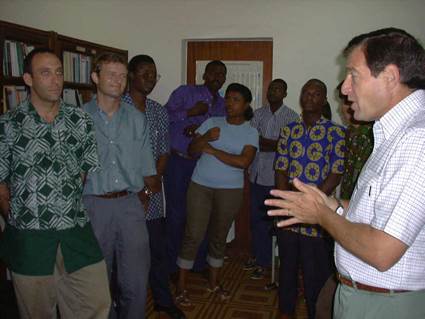
U.S. Ambassador listening to speech by UERD director.

Finally, a big thanks to Tavneet, another graduate student at Yale University, who took a lot of these photos during her 2 week visit to Burkina Faso where she got the chance to experience fieldwork first hand at probably the hottest time of the year when temperatures were always over 110 degrees Fahrenheit (or as she likes to claim 120 degrees).
